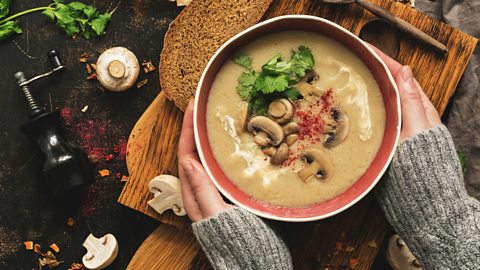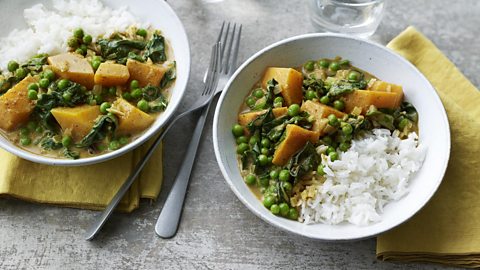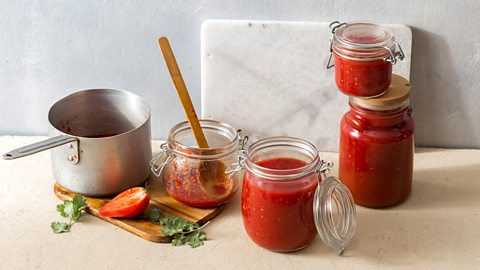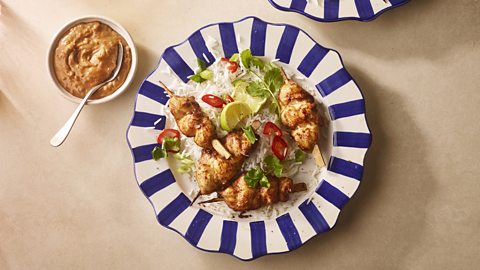Why focusing on gut health should replace the usual January diet this year
Made a vow to boost your health by eating better this New Year? Instead of restricting what you eat, try adding extra ingredients to your plate, says one gastroenterologist.

At this time of year, thoughts of indulgent Decembers and fresh starts see the self-improvement pressure mount. This commonly focuses on the food we eat, with people encouraged to diet to lose weight and boost their health. The problem? Many diets are restrictive, hard to maintain and – perhaps most importantly – don’t work.
“Science has shown us that when people have followed restrictive diets, they will inevitably, over the years, regain the weight that they’ve lost,” says Dr Saliha Mahmood-Ahmed, who specialises in gastroenterology.
“What does work is changing dietary patterns of eating. Trying to include as many gut-friendly wholefoods in your diet as possible, rather than focussing on excluding food groups, is a very different – and positive – psychological stance to take.”
Why the sudden focus on ‘gut-friendly’ foods?
‘Gut-friendly’ has become a go-to slogan, synonymous with good health. You’ve probably seen it gracing the packaging of many a supermarket product. But why now?
“The science on gut health has really evolved in the last 20 years,” says Mahmood-Ahmed. “There’s now an understanding of what the gut microbiome is and just how important it is to have a wide variety of bacteria in the gut.”
Over the last few years, dieticians, scientists and researchers have been working out what this means for our diet. While Mahmood-Ahmed says there’s still lots to learn – including how we can target an individual’s requirements rather than just give blanket advice – we can be sure at this point that eating a variety of plant-based foods is key.
What a gut-friendly diet looks like
“To foster good gut health, we need to look to a diet based on wholefoods and plants. This doesn’t mean you need to be vegan or vegetarian – I’m not. But eating more plant-based foods each week – ideally 30 different plants – is a great way to optimise your gut health.
“That might sound daunting at first, but when you consider that plant-based foods aren’t just fruit and veg but also wholegrains, legumes, pulses, spices, nuts and seeds, it becomes a lot easier to incorporate into your day-to-day life.”
Another way to improve your gut health is to add probiotics to your diet. These are believed to contribute to good gut bacteria and are present in dishes such as yoghurt (including kefir) and fermented foods.
In addition to specific types of foods, Mahmood-Ahmed highlights a nutrient we should be looking to include more of in our meals: fibre. Studies have shown that having plenty of this in our diet helps that same friendly bacteria to thrive in the gut.
“Lots of people focus on calories, fat or protein, but the one thing I do look at is fibre which is highly, highly underrated. In the UK, statistics show most people get around 18g of fibre a day, whereas the national recommendation is 30g.
“If you’re doing just one thing this year to improve your diet, I’d suggest looking at how much fibre you’re consuming. If it’s not enough, slowly increase the amount you get in a week and you’ll notice massive differences in your digestive system and general health and wellbeing.”
How to improve your gut health on a budget
You don’t need to spend a fortune on food and groceries to improve your gut health, says Mahmood-Ahmed.
“I always head straight for the dried pulses and grains section of the supermarket because they are cheap and go such a long way. Whether it’s pearl barley, bulgur wheat or lentils, these are all cost-effective options and really come to life with just a few spices.
“Cooking with tins of beans, lentils and pulses is also a fantastic – and cheap – way of incorporating more plant-based diversity into your diet.
“Also, if you look at all the frozen vegetables and fruits, they have an incredible amount of nutritious content and they work very much on a budget as well.
“I use frozen sweetcorn, carrots and peas all the time. And I go to Asian supermarkets and specialist supermarkets to see what different frozen goodies are available. Things like frozen okra or bitter gourd are all cost effective and allow you to be a bit experimental with dishes.”
Microwave vegetable curry
This curry utilises frozen vegetables and is packed full of nutrients

Ingredients that will improve your gut, quickly
If you are struggling with gut health issues, in particular constipation, Mahmood-Ahmed recommends three ingredients.
“In my clinical practice as a gastroenterologist, I meet so many constipated people on a day-to-day basis. And there are three ingredients which I always recommend.”
Consider these foods to be your new best friends when it comes to improving gut health and increasing fibre intake:
Chia seeds: “Even a tablespoon of chia seeds a day really helps bowel function.”
Kiwi fruit: “Kiwi is such an underrated and magical fruit, which really helps to foster good gut health, particularly if you’re prone to constipation.”
Prunes: “The humble prune gets such a bad reputation but they’re beautifully fruity. Don’t forget they’re just dried plums.”
Mango lassi chia pudding
Chia seeds are great for aiding gut health

Dr Mahmood-Ahmed’s gut-friendly recipes
“Gut-friendly dishes can be warm, hearty and cosy too. Think about a soup packed with vegetables and pearl barley: it’s deliciously comforting and yet good for you. There are also beautiful beany casseroles and stews, jacket potatoes with an array of different toppings – there’s no end to the options available.”
Mahmood-Ahmed has created four new recipes which all foster good gut health. Here, she explains the science behind them.
“This is such a quick and easy dish. It’s a twist on jacket potato with cheese and beans and it’s full of gut-healthy ingredients. Sweet potato is more fibrous than regular potatoes and has a slower release of energy. Black beans are a great alternative to baked beans and then you top it off with both live yoghurt (which is full of probiotics) and tomato salsa, to just add that extra plant-based diversity.
“During the weekend I put sweet potatoes on a tray in the bottom of the oven when it’s being used for something else – like a Sunday roast – then I keep them wrapped in foil in the fridge and heat them up in the microwave on the day I want to use them.”
“You get so much bang for your buck with this. It’s really inexpensive, the two main ingredients being cauliflower and tinned lentils. It’s something I love to put on a big platter in front of the kids or serve as a sharing dish if I’m having friends over, alongside pitta breads for scooping.
“It’s full of gut-friendly ingredients, with lentils coming packed with fibre and protein. Meanwhile, cauliflower is a great prebiotic to feed your gut microbes.”
“I think something people really find difficult when they’re trying to make a few dietary changes is remembering their body is hardwired to enjoy that sugar spike. This dish will give you the sugar hit you’re craving but you’ll also get fibre and lots of vitamins and minerals.
“In the centre you’ve got labneh which is strained yoghurt full of live bacteria and lots of protein. Plus, there’s the goodness of nuts and seeds, which are sprinkled over the top. It is a dessert which comes with added health benefits.”
“This is a classic example of how you can achieve a truly comforting dish with gut-healthy ingredients. In winter, when lots of people have colds, this is just what you need to feel better. It’s got lots of protein from the chicken, the turmeric has a lovely taste and is a natural anti-inflammatory and the squeeze of lemon juice will top up your vitamin C levels.
“On top of the health and comfort benefits, it comes with the bonus of being very easy to make. Other than shredding chicken at some point, all you have to do is bung a couple of things in a pot and allow them to boil.
“This is a great way to use up leftover roast chicken, as it will really cut down the soup’s cooking time.”
Originally published December 2023



